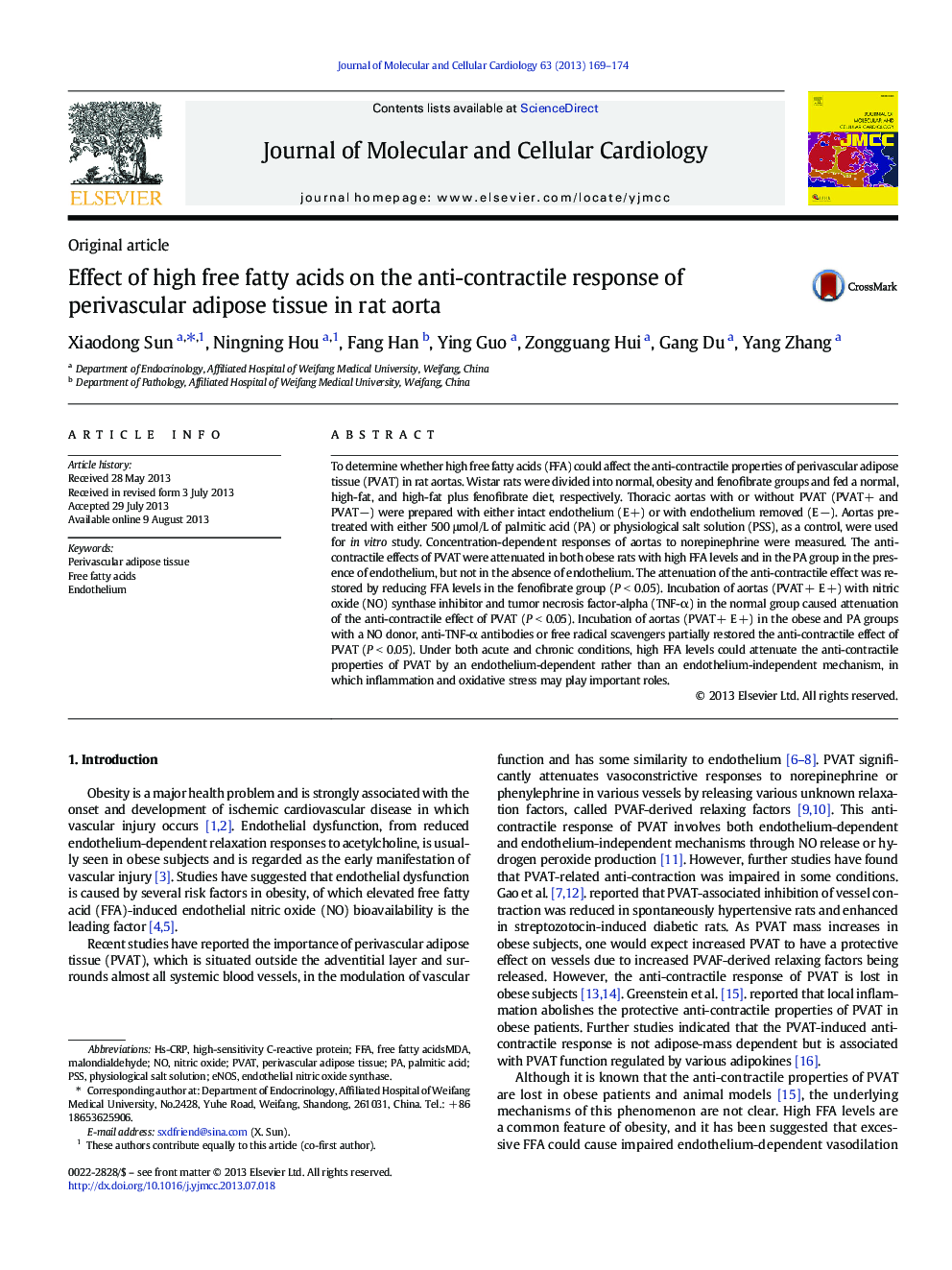| Article ID | Journal | Published Year | Pages | File Type |
|---|---|---|---|---|
| 8475064 | Journal of Molecular and Cellular Cardiology | 2013 | 6 Pages |
Abstract
To determine whether high free fatty acids (FFA) could affect the anti-contractile properties of perivascular adipose tissue (PVAT) in rat aortas. Wistar rats were divided into normal, obesity and fenofibrate groups and fed a normal, high-fat, and high-fat plus fenofibrate diet, respectively. Thoracic aortas with or without PVAT (PVAT + and PVAT â) were prepared with either intact endothelium (E +) or with endothelium removed (E â). Aortas pre-treated with either 500 μmol/L of palmitic acid (PA) or physiological salt solution (PSS), as a control, were used for in vitro study. Concentration-dependent responses of aortas to norepinephrine were measured. The anti-contractile effects of PVAT were attenuated in both obese rats with high FFA levels and in the PA group in the presence of endothelium, but not in the absence of endothelium. The attenuation of the anti-contractile effect was restored by reducing FFA levels in the fenofibrate group (P < 0.05). Incubation of aortas (PVAT + E +) with nitric oxide (NO) synthase inhibitor and tumor necrosis factor-alpha (TNF-α) in the normal group caused attenuation of the anti-contractile effect of PVAT (P < 0.05). Incubation of aortas (PVAT + E +) in the obese and PA groups with a NO donor, anti-TNF-α antibodies or free radical scavengers partially restored the anti-contractile effect of PVAT (P < 0.05). Under both acute and chronic conditions, high FFA levels could attenuate the anti-contractile properties of PVAT by an endothelium-dependent rather than an endothelium-independent mechanism, in which inflammation and oxidative stress may play important roles.
Related Topics
Life Sciences
Biochemistry, Genetics and Molecular Biology
Cell Biology
Authors
Xiaodong Sun, Ningning Hou, Fang Han, Ying Guo, Zongguang Hui, Gang Du, Yang Zhang,
